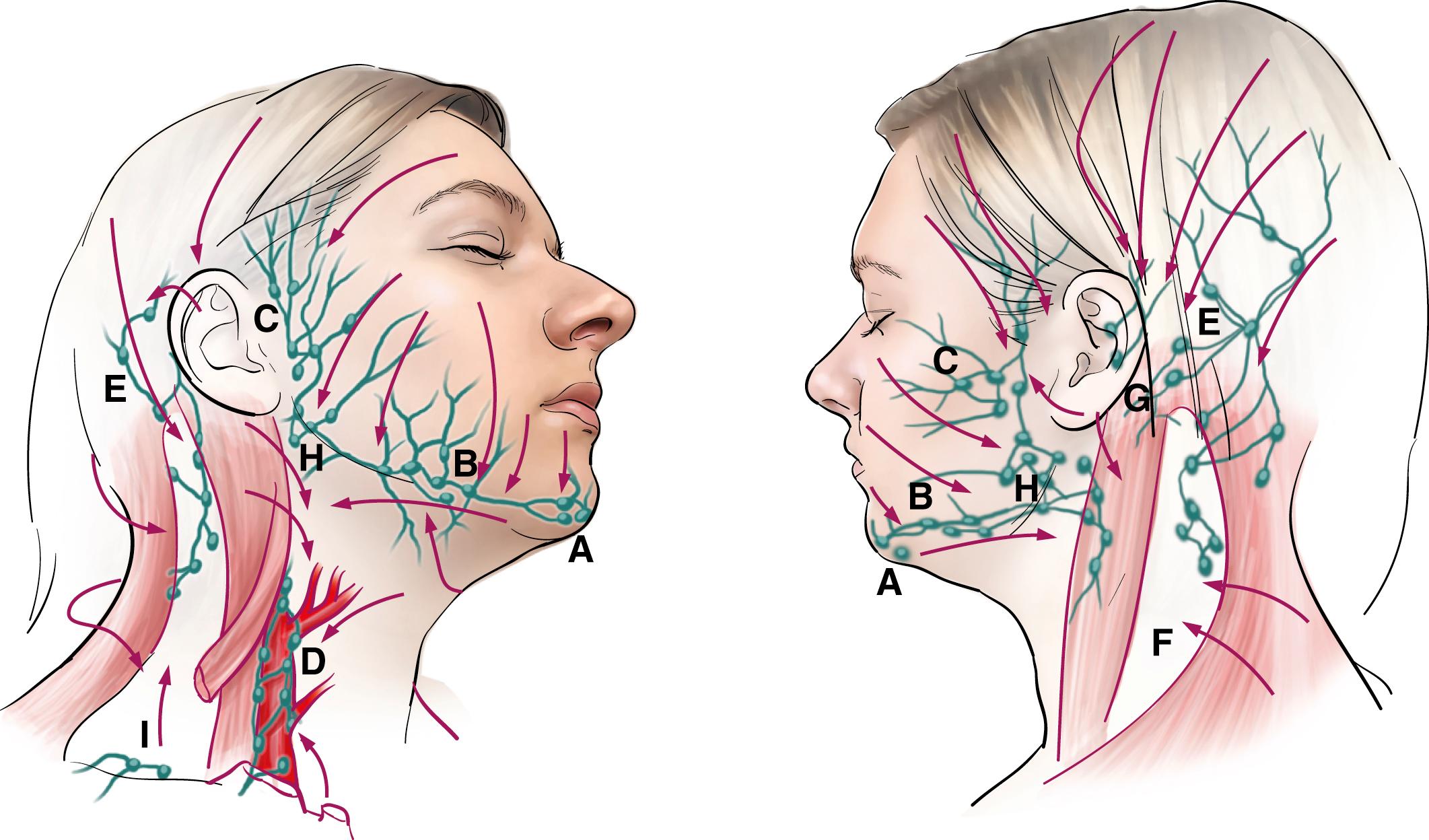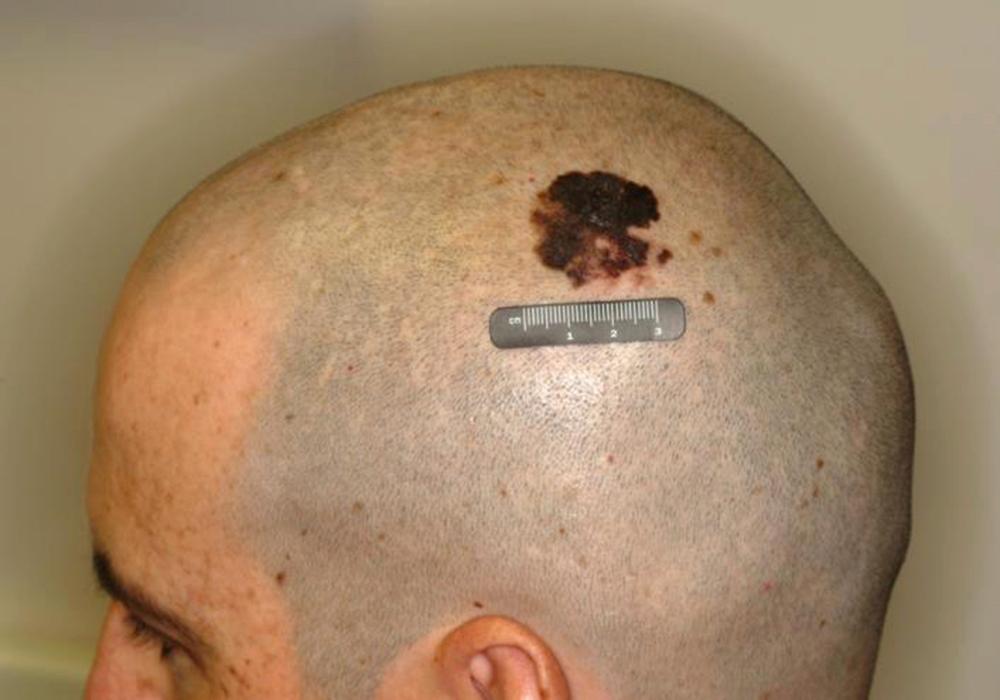Physical Address
304 North Cardinal St.
Dorchester Center, MA 02124
The posterolateral neck dissection is an operation that is typically used in the management of cutaneous cancers of the posterior scalp, auricle, or upper neck. It is done either electively, to stage the clinically node-negative neck, or therapeutically, to treat the node-positive neck. In contemporary practice, this operation is most often used to treat a clinically node-negative neck that has been found to have microscopically positive nodal disease in one or more of the regional nodal basins. The posterolateral neck dissection is an extended neck dissection that is often combined with a comprehensive or selective neck dissection. A description of this operation was first published in 1962. More recently, however, in 1980, Drs. Goepfert, Jesse, and Ballantyne of the M.D. Anderson Cancer Center wrote a definitive description of this procedure and their results with it. Typically this operation involves the removal of the lymph nodes in the postauricular, suboccipital, spinal accessory, and jugular lymph node basins ( Fig. 71.1 ). In experienced hands, this operation provides excellent oncologic, functional, and cosmetic results.

The spinal accessory nerve must be identified on the anterior and posterior border of the sternocleidomastoid muscle (SCM) and traced in its entirety to prevent inadvertent injury to this structure.
During the procedure, fibroadipose node-bearing tissue is removed from the inferolateral portion of the neck where the trapezius and clavicle meet. Extreme caution must be exercised in this region to avoid injury to inferolateral branches of the brachial plexus and the terminal aspect of the spinal accessory nerve.
Personal history of skin cancer: The majority of patients undergoing posterolateral neck dissection have skin cancer as the primary indication for the procedure ( Fig.71.2 ); therefore, a history of prior skin cancers is useful in treatment planning. This includes histologic type, location, and previous treatment (history of surgery or radiation treatment for skin cancer).

History of sun exposure
Family history of skin cancer
Occupational history: This operation, when performed without complication, can lead to decreased shoulder function for up to 18 months following surgery. Typically this is manifested by a decreased range of motion and strength on shoulder abduction, which, with intervention by a trained physical therapist, can be improved greatly with anticipated return to baseline.
Skin
Visual evaluation and palpation of the extent of the primary tumor
Include examination of the skin of the head and neck, especially the scalp, and auricle.
Neck
Inspect and palpate the postauricular, suboccipital, spinal accessory, and jugular nodal basins.
Note the number and size of each involved node and use as part of the clinical staging.
Assess the extent of nodal burden and involvement of regional structures.
Nerve function: Evaluate and document preoperative function of the spinal accessory nerve and brachial plexus, because these nerves will be at risk for injury during the dissection.
Axial computed tomography (CT) scan with contrast
Define the location and extent of the primary cancer.
Assess regional lymph node metastases.
Magnetic resonance imaging (MRI) or positron emission tomography (PET)/CT
Systemic imaging may be indicated based on the histology and clinical stage of the disease.
For patients with melanoma or Merkel cell carcinoma with thick primary tumors or extensive lymph node metastasis, a PET/CT and brain MRI or brain MRI with CT scan of the head and neck, chest, and abdomen should be ordered for a complete metastatic evaluation.
Fine-needle aspiration (FNA) is indicated for patients found to have palpable lymph node metastasis if the results will change the management of the patient’s problem.
If the presence of histologically confirmed lymph node metastasis is part of the inclusion criteria for a protocol of neoadjuvant systemic therapy, and FNA should be obtained
Use to confirm or rule out the presence of regional lymph node metastasis to facilitate treatment planning in cases where the finding of lymph node metastasis is indeterminate by cross-sectional imaging criteria.
The treatment of occult and clinically node-positive metastasis to the neck from a cutaneous malignancy involving the skin of the posterior scalp, auricle, and upper neck
The treatment of microscopically positive disease in the lymphatic basin after sentinel lymph node biopsy for cutaneous malignancy
Disseminated metastases: This operation is contraindicated in patients for whom the procedure would provide neither prolonged survival nor significant palliation.
Patients with extensive lymph node metastasis: Those with involvement of the deep muscles of the neck, vertebrae, or carotid artery are advised to consider systemic therapy options that could help to decrease the risk of distant metastatic cancer and potentially make the locoregional disease burden more manageable by resection.
Medical comorbidities with increased risk for general anesthesia: Patients deemed to be medically at high risk for general anesthesia who have microscopic lymph node metastasis can be often be managed successfully with radiation therapy alone.
Become a Clinical Tree membership for Full access and enjoy Unlimited articles
If you are a member. Log in here